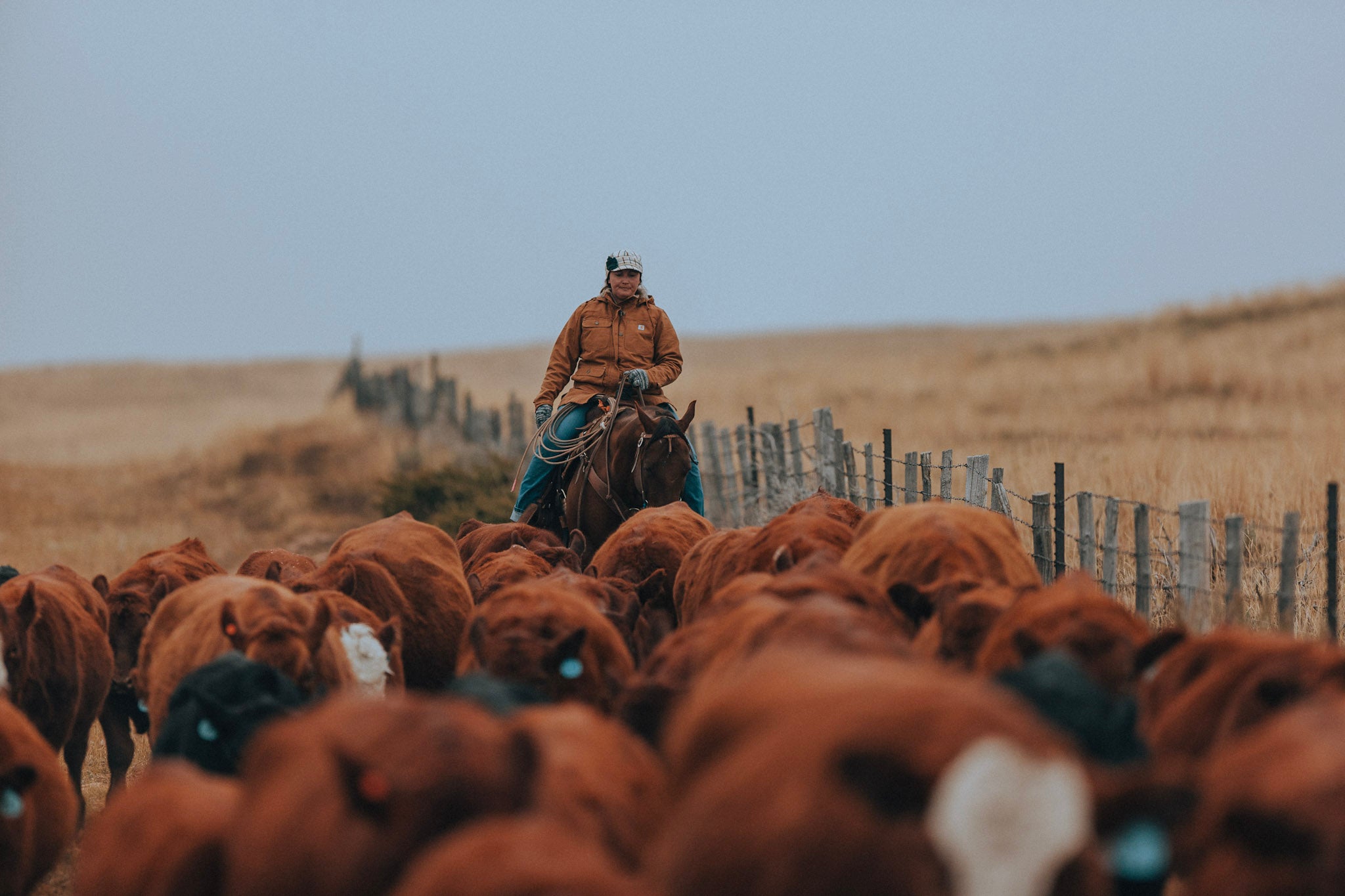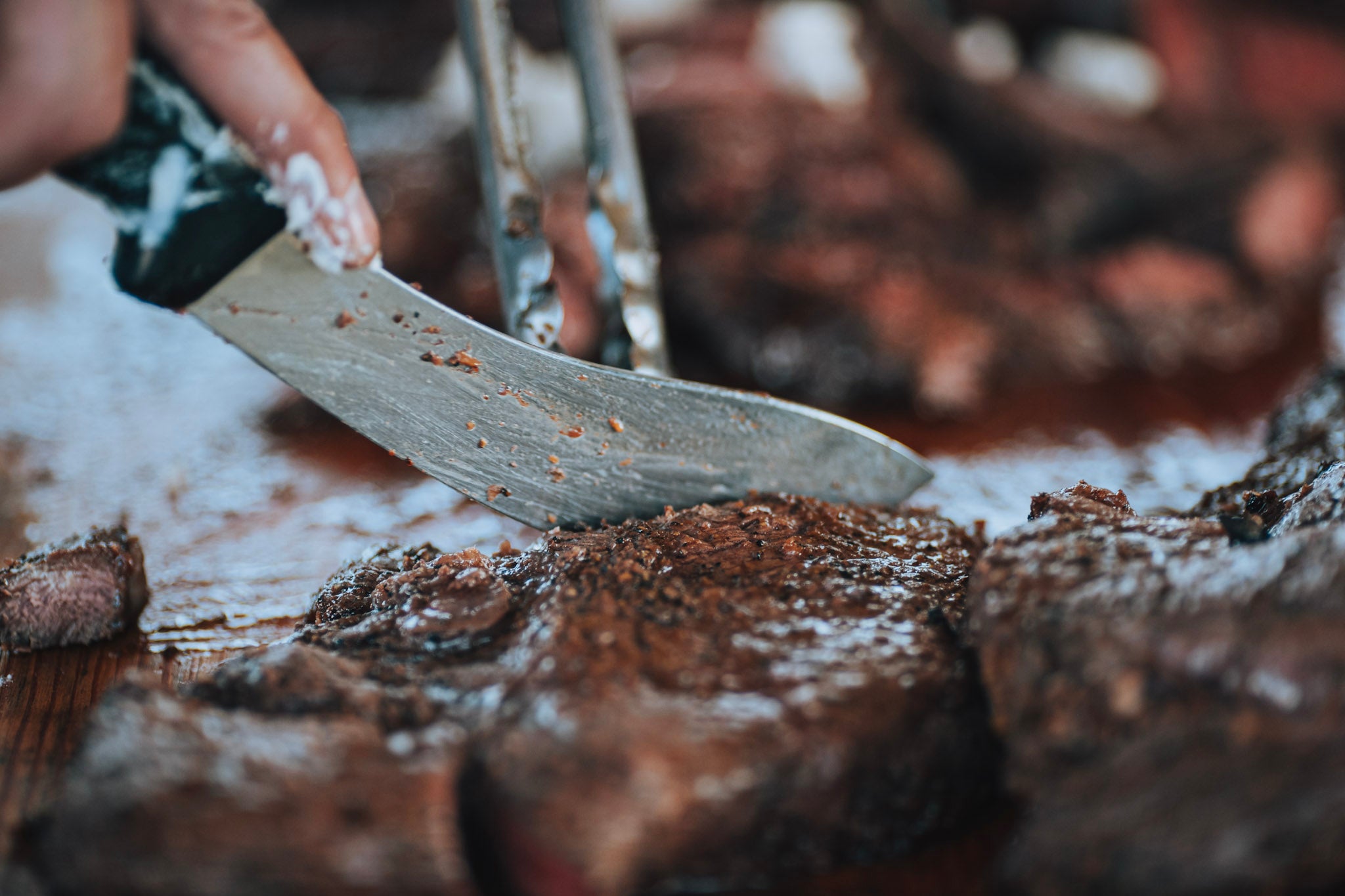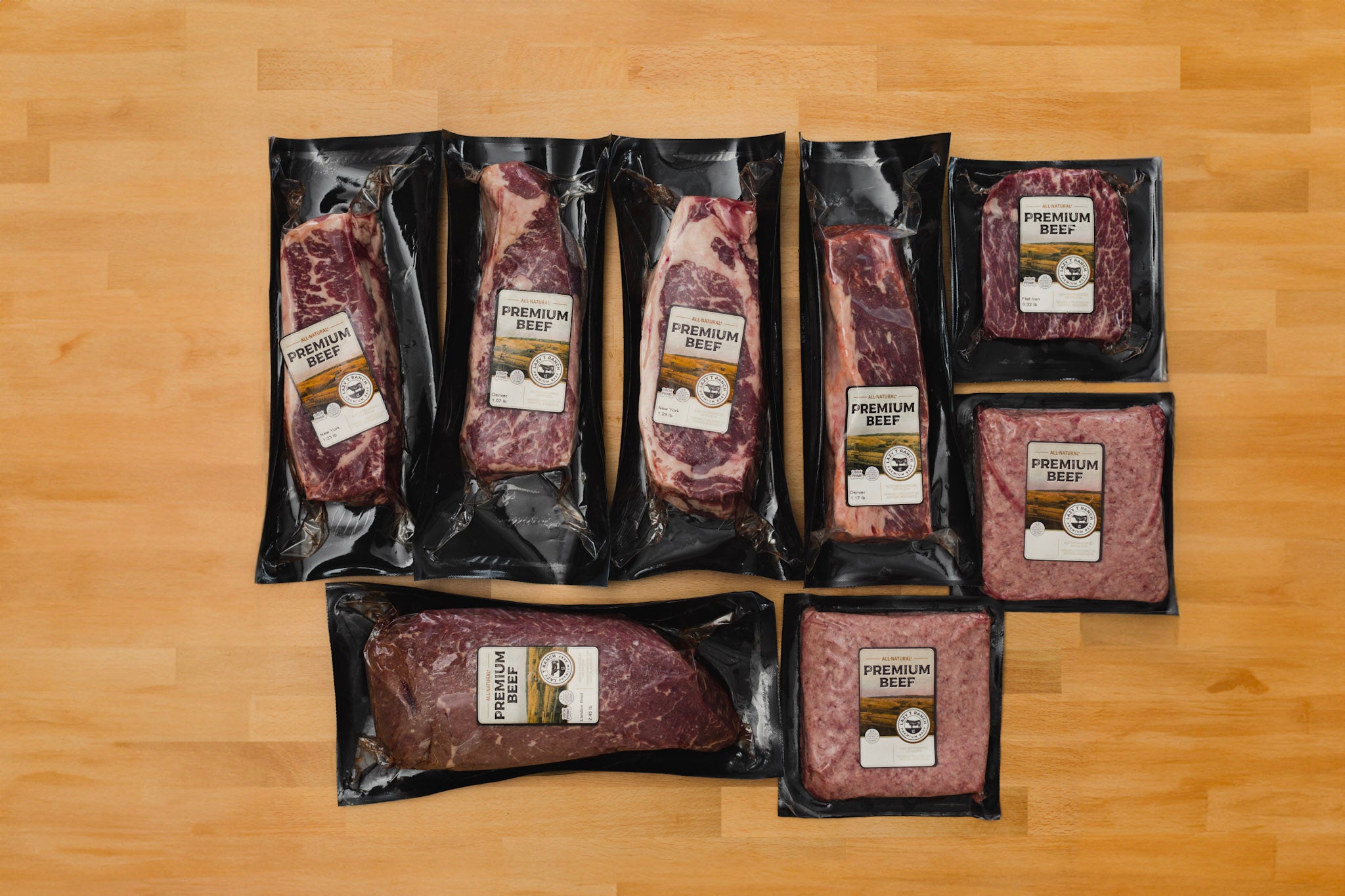
5 Reasons We Choose Traditional Horse Herding for Cattle Management
Few things have stood the test of time, the Western Way being one of them. Despite advancements in technology and efficiency, the tried-and-true methods of cattle management live on, with cowpokes herding on horseback.
Table of Contents:
- What Is Herding?
- The Different Types of Herding: Horses vs. ATV
- Here’s Why We Prefer Horse Herding for Our Beef
- 5 Reasons We Choose Traditional Horse Herding for Cattle Management
- How Does Horse Herding Impact Our Beef Quality?
- Ensuring Beef Quality — From Lifestyle to Production and Beyond
What Is Herding?

According to National Geographic, herding is “the practice of caring for roaming groups of livestock over a large area.” Traditional methods include horseback, on foot, and vocal cues.
The Different Types of Herding: Horses vs. ATV
When it comes to cattle, traditional and nontraditional herding methods spark debate. Many ranchers and stockmen have forgone the classic Western herding methods, instead choosing to move their livestock with ATVs (all-terrain vehicles) due to their fast pace.
Horseback Herding
This involves a cowpoke on horseback maneuvering livestock. Benefits of this method include less stress on the animals, reduced chance of animal injury, and smaller impact on the environment. Possible cons include slower pace, the costs associated with caring for horses, and limits based on the handler’s skills.
ATV Herding
Using motorized vehicles allows one to herd quickly. Benefits include efficiency, speed, greater control, and less overall costs. Possible cons include noise pollution, animal stress, and larger impact on the environment.
Here’s Why We Prefer Horse Herding for Our Beef
Even though ATV herding offers efficiency, the Western Way—horseback herding—remains the most popular method. Some might credit this to the romanticized ideals of cowboy life. However, the decision to honor tradition is more than an aesthetic choice.
At Lazy T Ranch, we stay true to our roots and follow in our forefathers’ footsteps by herding on horseback.
5 Reasons We Choose Traditional Horse Herding for Cattle Management
1. Horseback Herding Takes Stress Off the Livestock
Cattle are raised in wide, open spaces. They aren’t accustomed to loud machinery, so using ATVs to move them would increase their stress, and stress enters the meat.
Besides minimizing noise, horseback herding creates a natural environment: animals working animals. Cattle are more comfortable around horses, and when the cattle are docile, they’re easier to maneuver. Also, riding a horse makes a person more visible, which in turn makes cattle more responsive.
Slow and steady, on horseback—that’s how we do things. We operate calmly, refusing to run our cattle. Our goal is to yield the highest quality beef. By keeping stress off our cattle, we allow for better grades and flavorful meats.
2. Horseback Herding Allows a Slower Pace, Which Decreases the Chance of Injury
We strive to give our animals the best life on the ranch. By herding at a relaxed speed, we prevent injury, lower stress, and support the overall health of our cattle.
A day in the saddle might require an extra hour or two, but when it comes to moving cattle, efficiency isn’t our main priority. We care about treating our livestock humanely and ensuring their wellbeing. Good beef comes from a good life.
3. Horseback Herding Has a Smaller Impact on the Environment
Unlike ATVs, riding horseback leaves a minimal trace. ATVs compact soil, damage foliage, and risk polluting the terrain with gasoline and other emissions.
4. Horseback Herding Gives an Advantage for Navigation
One word: horses. They’re perceptive, able to hear and see better than a person. Often, the horse finds the cattle before the cowpoke does.
Along with having a partner on the job, horseback herding increases mobility. Some terrain can only be navigated in a saddle.
5. Horseback Herding Is the Western Way

Ask any rancher or cowpoke about their profession, and their eyes will light up with something best described as identity. The job is more than work.
It’s a lifestyle spanning generations.
For nearly two hundred years, cowpokes have roamed our red hills of Wyoming on horseback, gathering and trailing cattle. Looking out at Lazy T Ranch, its sprawling expanse of tableland, rimrock, and canyon, there’s no denying its timelessness.
Horseback herding, as a method of cattle management, is effective. It maintains a low-stress environment, which in turn contributes to higher-quality beef. However, the conversation about horseback herding must include identity.
Those who still choose to move cattle from a saddle respect the history and culture of their vocation. Most even see it as a sacred art.
Although there are other methods of herding animals (mentioned above), none are the genuine Western Way or ignite the same passion and pride. The Western Way is effective. It is identifying and holds its participants to a code of conduct, prioritizing integrity above all else.
At Lazy T, the West lives on.
Horseback herding is one example of how we honor the traditions of the generations before us. It might be the harder way, but we know it’s the right way.
We believe in the right way.
For us, identity matters. We choose to operate like our grandfathers, with methods proven to work, because we understand raising cattle is about more than beef.
It’s about legacy.
Here at the ranch, cowpokes will continue herding on horseback. A day of work will look as it has for centuries, with cattle among sagebrush, their hooves kicking up dust.
How Does Horseback Herding Impact Our Beef Quality?
To understand the benefits of maintaining a relaxed environment for cattle, we must look at how stress affects beef quality.
Yep, a Stressful Environment Can Actually Impact Your Beef Purchase

Cattle stress increases the adrenaline in their bodies, which affects beef tenderness and flavor. Short-term stress makes beef tough and flavorless while long-term stress creates high acidity in the meat, breaking it down into dark mush and limiting shelf life. Long-term stress also damages the cattle’s organs, impairing how they process waste.
Ensuring Beef Quality — From Lifestyle to Production and Beyond
By horseback herding, we ensure our cattle yield the tastiest, highest quality meat, available for you to enjoy.


